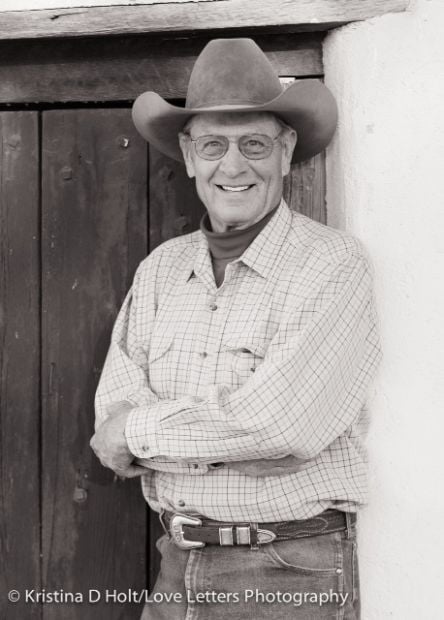Richard C. Collins has a view of the border that precious few are able to share.
It comes from riding horses, on both sides of the border. From his saddle, Collins, a Sonoita rancher and Arizona native, sees the border region much differently from most Americans, even those living north of the line. Collins sees a rich region and a people who share common geography, history and concerns.
“We are not in a war zone,” said Collins, whose recently released book chronicles his relationships with Sonoran and Sonoita friends, his cross-border horse rides, and his affection for the treasured land on both sides of the border.
“Riding Behind the Padre: Horseback View From Both Sides of the Border” is Collins’ sensitive and grounded view of the border, and the history of Jesuit explorer and missionary Eusebio Francisco Kino, whose routes Collins and his fellow horse riders retraced.
The non-Catholic Collins participated in six cabalgatas, horse rides, organized by the family of Jesús Enrique Salgado Bojórquez of Hermosillo, Sonora, in the late 1980s.
The Salgado family, devout Roman Catholics, followed documented trails of Kino, who traversed thousands of miles on horse or burro, across the Pimería Alta, for 24 years from 1687 until his death in 1711.
It was their way to honor Kino and recognize his accomplishments, which included cartography, introduction of wheat and citrus, and cattle raising.
Collins’ account involves four of the cabalgatas, beginning in 2008 with a four-day ride from Sonoyta, the Sonoran border town across from Lukeville, 125 miles southeast to Caborca, a major agricultural center in Sonora.
Another ride, in 2010, occurred in Arizona. The riders followed the San Pedro River from the border to Cascabel, north of Benson.
The rides went without a hitch and there were no problems, which would surprise many people who believe that the border and travel in Sonora are fraught with danger.
In his book, the 73-year-old Collins — who worked the 13,000-acre C6 ranch in the Canelo Hills between Sonoita and the border — takes us along the gullies and hills, the ranches and towns, meeting people and seeing the land.
“It’s not just riding the horse but getting off the horse and looking at the grass and getting close to the people,” Collins said by phone. Earlier last week, Collins gave a presentation at the Himmel Park Library, 1035 N. Treat Ave.
While Collins would prefer to focus on people, the land and its plants and creatures, talk about the border invariably leads to dissecting issues: immigration and smuggling, and the militarized attempts to stem the flow of people, drugs and weapons.
On those topics, Collins, who prior to ranching in Sonoita lived in rural Central America and southern Mexico working on public health projects for the Centers for Disease Control, has strong views.
“The corruption which exists in Mexico is duplicated on this side of the border by our seemingly huge appetite for illegal narcotics and cheap labor,” Collins said. The U.S. supplies the weapons and buys the illegal drugs while Mexico fights the war, he added.
But the tall, soft-spoken Collins, whose cadence is like the easy gait of a sturdy ranch horse, prefers to talk about the people of northern Sonora, families that have lived on the border for generations, who continue to cross back and forth, some of whose children graduate from the University of Arizona.
“They are just like me. They are peers. They want the same things that we want: Raise their families in a peaceful, drug-free environment.”





